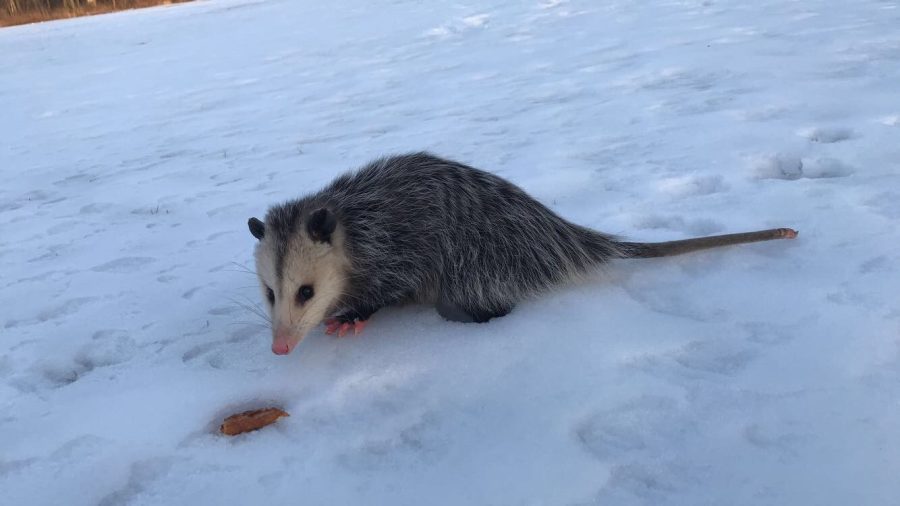On our weekly Arb walk this Friday, the Naturalists spotted the body of an opossum (Didelphis virginiana) near the entrance of the Lower Arb. Commonly known as Virginia Opossum, these critters are about the size of a house cat, with a gray body, white face and pink nose. Opossums are marsupials — their young are not fully developed at birth and are carried in a pouch by the mother, like kangaroos. Newborns have tiny front feet with small claws that they use to climb up their mother’s belly and into her pouch to further develop.
Opossums were originally only found in the southeastern US, but their range has recently expanded north. Northfield had not seen any until around the 1980s, and they only became common in the 2000s. Nowadays, opossums can be found all the way up to Duluth, Minnesota.
People have suspected that milder temperatures in recent years have caused opossums’ habitat to expand north. However, Department of Natural Resources (DNR) biologist John Erb points to human activity as a more important factor. The changes humans have brought to the landscape, such as roads, bridges, ditches and culverts, all make it easier for wandering animals to cover more ground. Opossums like to spend most of their day in hollow logs or in dens in the ground, making it especially easy for them to survive in man-made landscapes. In addition, farm fields could be easier to travel and scavenge in than forests or prairies were.
How do these newcomers affect our ecosystem? Biologists say opossums don’t really compete for food or territory with other animals since they’re not forcing other creatures out, with one exception. They also carry a disease that can cause a neurological condition in horses called Equine Protozoal Myeloencephalitis.
A fun fact about these animals: when cornered, opossums might fall into a death-like state and secrete a strong, unpleasant odor. This is called ‘playing possum’.










